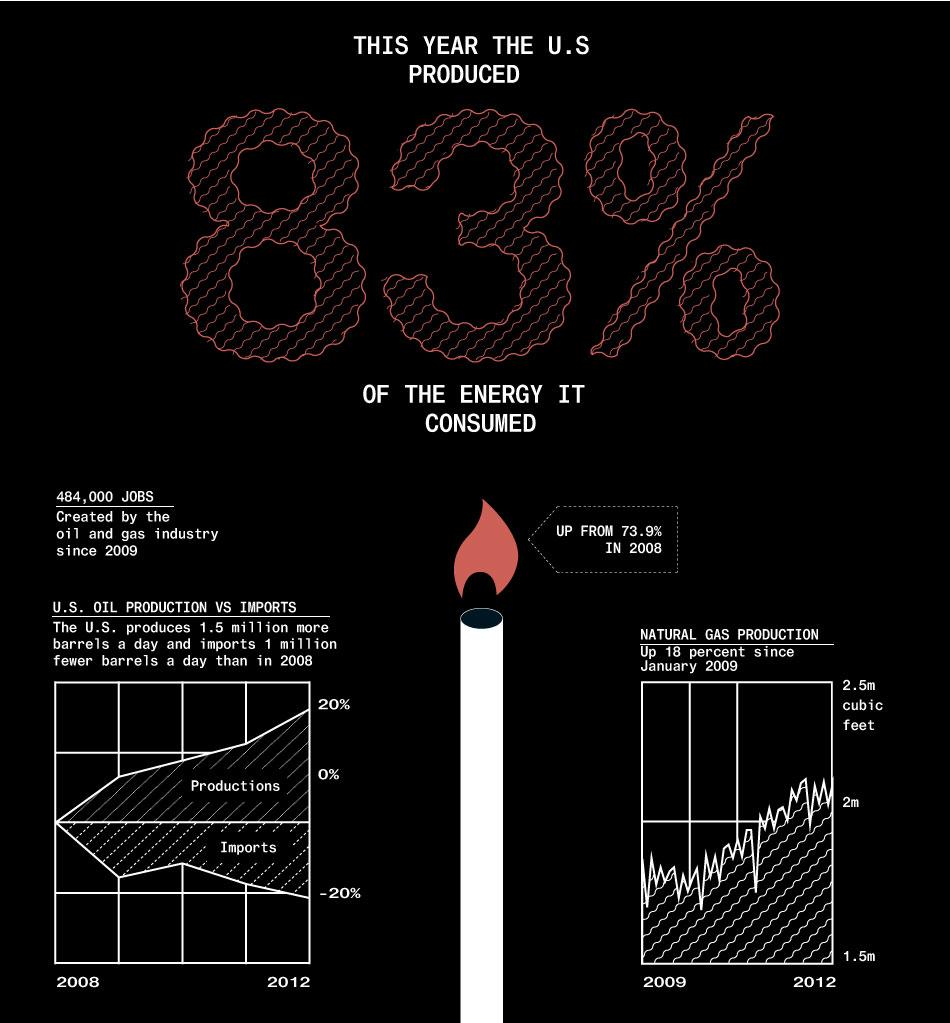Two nights ago I watched the presidential debate.
It was agonizing, a circus.
Between the “binder of women” comment from Romney and constant interruptions by both candidates, real policy debate was hard to decipher.
However, both candidates agreed on one thing: Energy production in the U.S. is booming.
Welcome to the party, gents.
We’ve been talking about the American energy renaissance in Energy and Capital for years now…
But I’m here to tell you that oil and gas production in the U.S. in about to accelerate even more. I’m talking exponential growth.
As you read this, another technological breakthrough is opening up more oil and gas…
Now, you know about horizontal drilling and hydraulic fracturing. They’ve been game-changers of epic proportions.
How much so?
According to a recent report by Bloomberg Businessweek, U.S. energy independence is almost here: “Oil and natural gas production in the U.S. is increasing at its fastest rate in 50 years, while imports from OPEC have been cut by a quarter in the last four years.”
In fact, North Dakota hit record oil production this past August at 700,000 barrels of oil per day — and it’s rising almost every week.
But it was this statistic from the report that really caught my eye (click to enlarge):
It’s hard not to be optimistic when you digest these numbers… and, dear reader, it’s about to get a whole lot better.
Remember these words: “pad drilling.”
It’s also been called “cluster drilling.”
This is what a typical well site looks like:

Historically, one well was drilled per site. When the well was complete, the drill rig would have to move to a new well site.
When I was in the Barnett Shale in Texas in 2005, the spacing between each well site was around 100 acres… later it became 50 acres, etc.
However, today pad drilling can drill anywhere from four to ten wells from the same pad site.
Here’s a simplified illustration:

In the graphic above, the drilling pad hosts four wellheads with a total of eight horizontal wells.
Pad drilling allows the oil or gas producer to target a much larger area of underground resources while minimizing the impact on the surface. Concentrating the wellheads also helps the producer to reduce costs.
Typically, what happens is the well pad drains a rectangular area — known as a unit, or pool — usually about one half mile wide by two miles long, with the pad itself positioned at the center of the rectangle…
So while the drill bit will extend throughout this rectangle, the majority of the above-surface area in the rectangle is not required for the well pad. It will be left completely undisturbed.
The well pad itself is generally four to five acres that is cleared, leveled, and surfaced over.
Pad drilling is accomplished through the use of a movable flex rig. The intent is to drill as many wells on a pad as are economically feasible. Drilling more wells on a pad helps to minimize the environmental footprint of drilling.
You can watch a demonstration of Range Resources moving its drill rig inside the pad here.
So, what does all of this mean?
Simple: Oil companies in the Bakken and Eagle Ford can drill more wells in less time.
In North Dakota, for instance, seven new oil wells are going into production every single week day.
That’s mind-blowing.
Oil production is about to surge…
Gas production can surge, too — as long as the price of natural gas remains profitable for drillers.
Another life-altering fortune is about to be made…
Stay tuned.
Forever wealth,
Brian Hicks Brian is a founding member and President of Angel Publishing. He writes about general investment strategies for Wealth Daily and Energy and Capital. Brian is the managing editor and investment director of R.I.C.H Report (Retired Independent Carefree Healthy) New World Assets and Extreme Opportunities. For more on Brian, take a look at his editor’s page.





